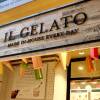When I set out to profile five of the most popular Latin cheeses, I was thrilled to have the opportunity to explore the impressive selections at both my local Latin markets as well as at my neighborhood Market Basket. In my naïveté, I assumed that there would be a clear delineation between the popular cheeses and the more obscure.
I could not have been more wrong.

There were queso frescos in the styles of different countries like El Salvador, Honduras and Guatemala. Brazilian cheeses for snacking and frying, cheeses for pairing with guava paste, cheeses for arepas. Before making a purchase, do your research and know what you’re trying to achieve when you take that cheese home. Here are some of the more prevalent categories you can explore yourself, a basic primer on how to use them and where to find Latin cheeses in the Boston area.

Cojita
This firm, crumbly Mexican cheese packs a salty punch somewhere between Parmesan and feta. Sprinkle it on salads, enchiladas, on grilled veggies, in grain bowls, or, more classically, on the ever-popular Mexican street corn, elotes . For my part, I love cojita in esquites , the off-the-cob version of elotes that’s less messy to eat and travels well for picnics, potlucks or delightful desk lunch side.

Queso Fresco and Queso Blanco
These two ubiquitous fresh, farmer-style cheeses have a mild, milky quality to them, and will crumble or fry up, soften slightly with heat but won’t fully melt. Use them for stuffing vegetables, in a sauce as in Peruvian papa a la Huancaína or cubed with guava paste as a snack. Here’s how to make your own queso fresco at home .

Queijo Minas
This iconic Brazilian cheese is salty, spongy and not particularly suited for melting or cooking, but it can be used to make sandwiches, salads and pair with sweets. The tradition of making Minas cheese is more than 300 years old. Queijo Minas is the traditional cheese of choice for making Brazilian cheese bread, pao de queijo .

Queso Para Freir/Queijo Coalho
Like Greek halloumi and Indian paneer, queso para freir and queijo coalho are mild, firm, rubbery and slightly squeaky. They won’t melt but can be grilled and will hold their shape well. Most recipes call for simply frying like in this Columbian version or grilled on a stick .

Queso Oaxaca/Queso Asadero/Queijo Mussarela
These semi-hard cheeses are mozzarella-like in flavor and texture, though don’t be surprised if your Oaxacan cheese pulls apart like string cheese. They’ll all melt well enough to make an excellent quesadilla and queso fundido .
Where to find Latin cheeses in the Boston area:
Sunrise Market
152 Brighton Ave., Allston
La Internacional Foods Corporation
318 Somerville Ave., Somerville
Tropical Foods
450 Melnea Cass Blvd., Roxbury
Market Basket (Somerville)
400 Somerville Ave., Somerville
El Valle de la Sultana Market
121 Bennington St., Boston
Mayfair Foods
506 Cambridge St., Allston
La Chapincita Market
424 Moody St., Waltham
Minerao One Stop Mart
57 Union Square, Somerville
Teresa Market
571 Washington St., Brighton
Super Mircado Latino
458 Broadway, Everett




